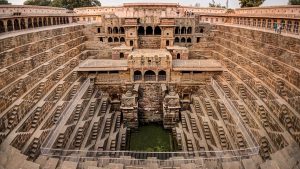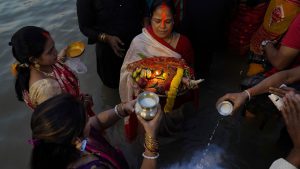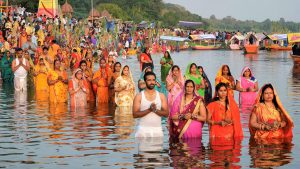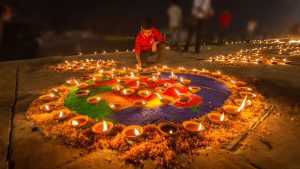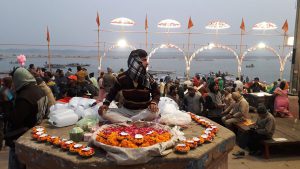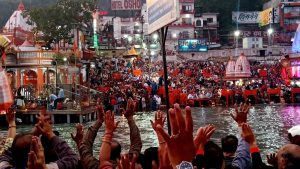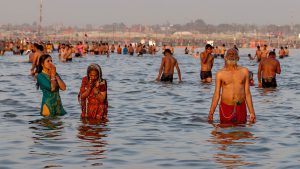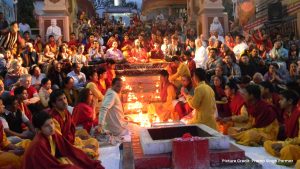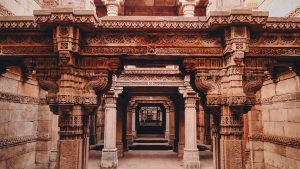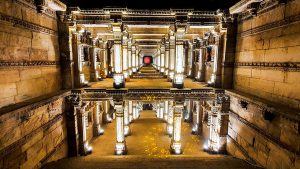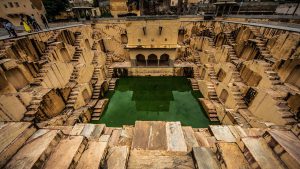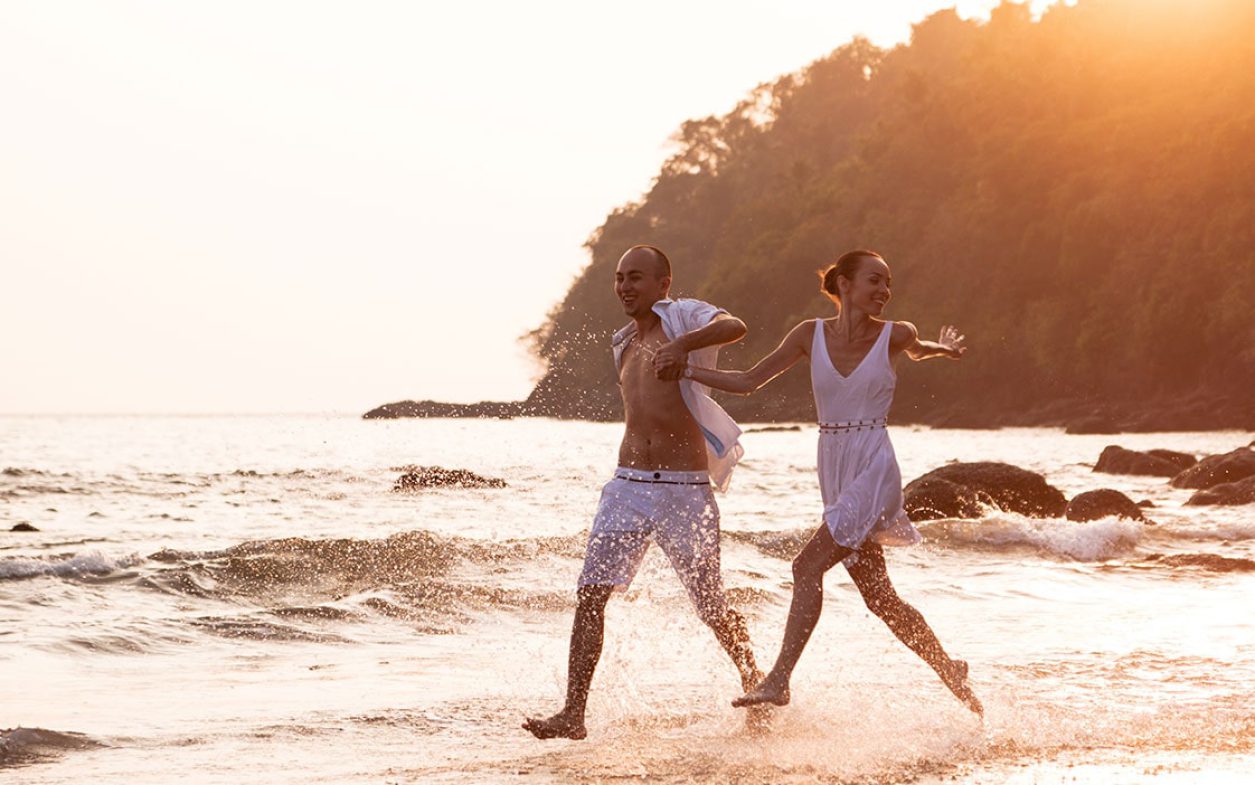
art of travel
Monthly Musing
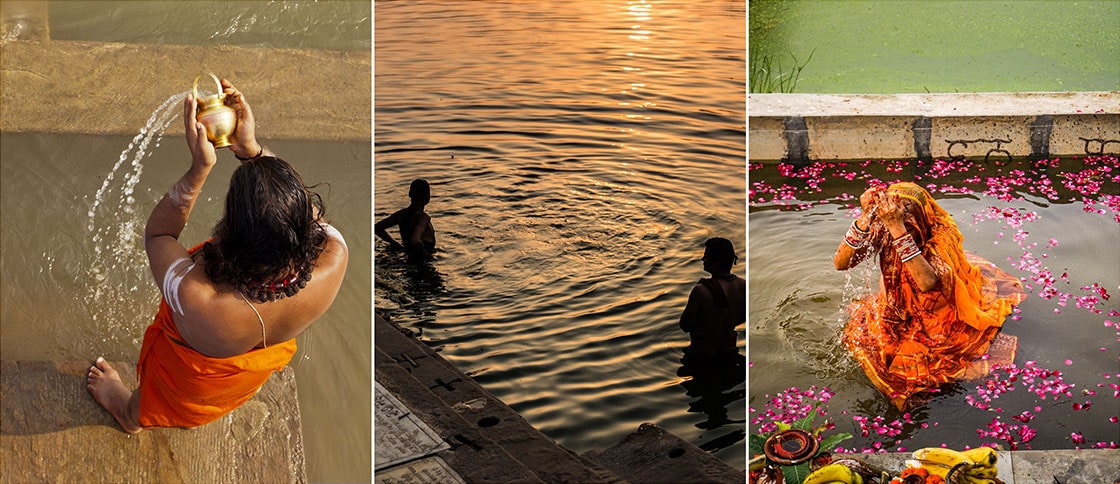
The raw power of water to both give life and violently take it away underlies its place in our cultures and faiths. It may manifest itself differently in different parts of the world and India but it is these two qualities because of which water is revered, celebrated, and has been a source of creative inspiration.
In India, it is believed that water washes away bad karma, diseases and offering it to the thirsty earns you instant punya or merit. Water is taken in hand while uttering a prayer, water is used to wash the hands and feet before entering a place of worship or any dwelling, and even before accepting a gift. Water bodies play an important role in India’s culture and faith. They are believed to be sacred and living entities. All major pilgrimages and festivals are held on the banks of a water body.
For the ancestor-worshipping Kodava community of Karnataka in South India, everything revolves around the River Kaveri. She is their protector deity, and the Kodavas not only go to her for everything; from birth to marriage to death, but also celebrate her birthday. They call the River Kaveri the Big Mother, name their children after her, and believe that their land, culture, tradition, and civilization flourished because of her blessings. Even the unique way of draping the saris of Kodava women is in honour of River Kaveri.
In the East, people of the hills of Meghalaya and the plains of Assam still barter during the annual Jonbeel Mela held by the banks of a moon-shaped lake. The Angami Nagas, despite being Christians, take a ritual bath in the streams to wash away bad karmas during Sekereyni – their New Year Festival. While no wedding in Assam is complete without a Pani-Tola (water gathering) ceremony where the mothers go to a water body to collect water to bathe the groom and the bride, in Calcutta (now Kolkata) goods were loaded into boats on the River Hooghly and offloaded in warehouses by the Thames in London during the height of imperial trade.
Water is scarce in the arid Western part of India but it hasn’t stopped people here to celebrate and getting inspired by it. They have devised ingenious methods of harvesting water – be it the gorgeous step wells of Gujarat and Rajasthan with their elaborate carvings or the water reservoirs of the sea forts of Maharashtra. Water has also been a sartorial inspiration here. Leheriya, a traditional style of tie and dye in Rajasthan comes from the word Leher (meaning waves).
For the Hindus of North India if being cremated by the River Ganga is not an option, then taking a pilgrimage to dip in her waters can suffice for a lifetime. The Kumbh Mela held by the banks of the Ganga is the largest human gathering in the world. Every year, millions of Hindus take a dip in the Ganga during the month-long Kumbh Mela to cleanse themselves of their bad karmas. The Ganga has played a crucial role in shaping the geography, economy, and spiritual life of India. She has not only supported the great agrarian empires of the distant past by nourishing crops across the 300,000 square miles of the Gangetic plain but also the mighty industrial empire of Victorian Britain. The Ganga continues to shape India in a significant way even today as we continue to harness her both for hydroelectric power and complex irrigation systems, along with supplying water to half a billion people.
What’s New
PashooPakshee is a social enterprise that provides craft based livelihoods to promote human-wildlife co-existence. They work specifically with communities that share their boundaries with protected forests. By providing alternate means of livelihood, PashooPakshee is helping reduce the dependence of these communities on the forest. Their intent is to create a win-win situation where the communities perceive wildlife conservation as an avenue for prosperity rather than a hindrance. Recently, they have opened their craft experience centres for visitors to attend craft workshops, interact with the artisans, and take home delightful souvenirs. The craft centres are an initiative by PashooPakshee and Conservation Wildlands Trust that supports Community led tourism projects to let tourists get a taste of life near protected forests. You may experience a village life trail or attend a workshop or simply visit their shop for souvenirs. Each centre has something different to offer with its unique products and experiences.

Khamreeth Centre at Pench National Park
The Gonds of Pench have been the true guardians of Pench National Park since eons. Visit Khamreeth Centre, an all women run craft centre in Pench, learn about the Gond tribal villages, and listen to their stories of coexistence with the Tigers. The Pench Forest is known as the forest that was home to the Jungle Book character Mowgli. Here is your chance to create your own Mowgli or Bagheera keychain and take home this handcrafted souvenir! You may also help the villagers in daily chores like grinding flour, cow dung flooring, and filling up water from a hand pump, have a taste of fire cooked local cuisine and enjoy some local music, dance, and folklore to wind up the trip.

Kanha Craft Centre at Kanha National Park
The Kanha Craft Centre is an initiative by PashooPakshee and The Corbett Foundation that supports community led tourism projects to let tourists get a peek into the way of life of communities who share their space with the Tigers. Visit the Corbett Tola, a tiny mock village that is bustling with activities, creativity, and conversations. It is home to Kanha Craft Centre, a Tribal Museum-ette, a medical clinic, a small pond, and a Mahua tree. Spend the day here and be ready to get amazed at what a group of dedicated women can do! Craft your own bag charm or a personalised stationary set or simply visit to shop for irresistible souvenirs that contribute to the local economy

Madla Centre at Panna National Park
The Panna National Park has created a conservation history in India by bringing back its Tigers! It is easily a place where one must stay longer. A new must-do when in Panna is to visit the Madla Craft Centre. The Madhya Pradesh Tourism Board has joined hands with PashooPakshee to create a livelihood program that focuses on developing responsible handmade souvenirs and merchandise portraying iconic destinations of Madhya Pradesh. This is a step to create community led tourism experiences that provide local economic benefits. Buy interesting souvenirs of the Khajuraho temples, Wildlife in Panna or make your own souvenirs and take home tangible memories to relive your visit to Panna.
Stories from India
Raja Ravi Varma – the Father of Indian Modern Art
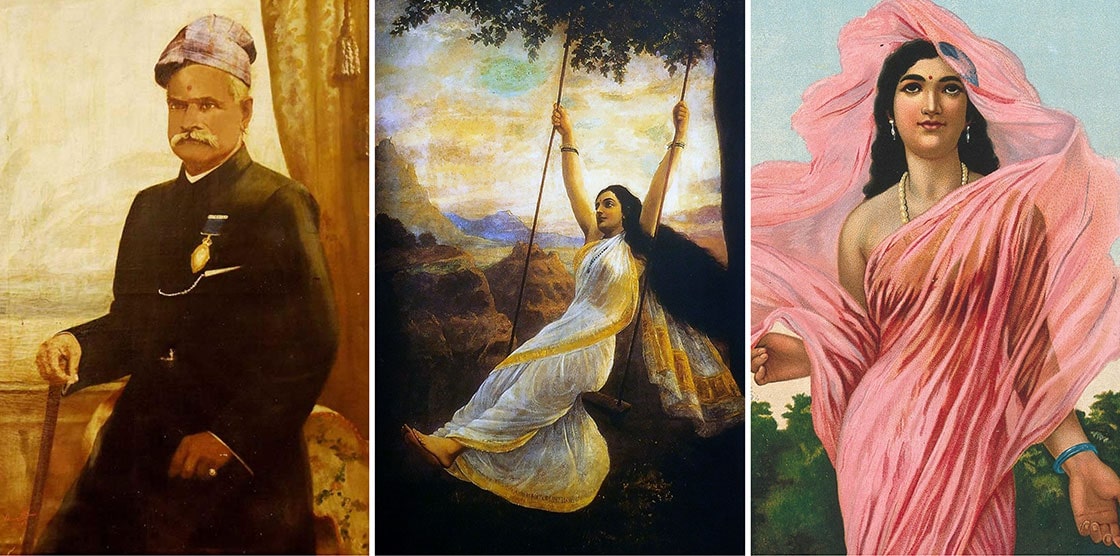
Considered as one of the greatest painters in the history of Indian Art, the legacy of Raja Ravi Varma of Kerala have influenced and inspired designers, artists and historians. With his realistic details, Raja Ravi Varma not only brought alive mythological stories and the people across the country but also made art affordable to ordinary people. His prints of Indian epics which hang on the walls of many homes still continue to be the springboard for story-telling sessions by grandmothers and aunts.
What set Raja Ravi Varma apart from his contemporaries was his use of the techniques of European Realism to tell Indian stories. He was also the first to use oil paints on canvas. Travelling all around India at a time when travel was not easy, he brought the diversity of India alive on canvas with great aplomb. Women which Raja Ravi Varma met during his life and travels resulted in some of his best works. One of his best known paintings is the iconic “Galaxy of Musicians” which represents Indian women in regional costumes and showcases a variety of Indian textiles. Raja Ravi Varma is also credited with bringing about a renewed vigour in portraits of sari-clad women. His realistic style offers stunning details such as the folds of the pleats of the sari, the mind boggling variety of jewellery across India and much more.
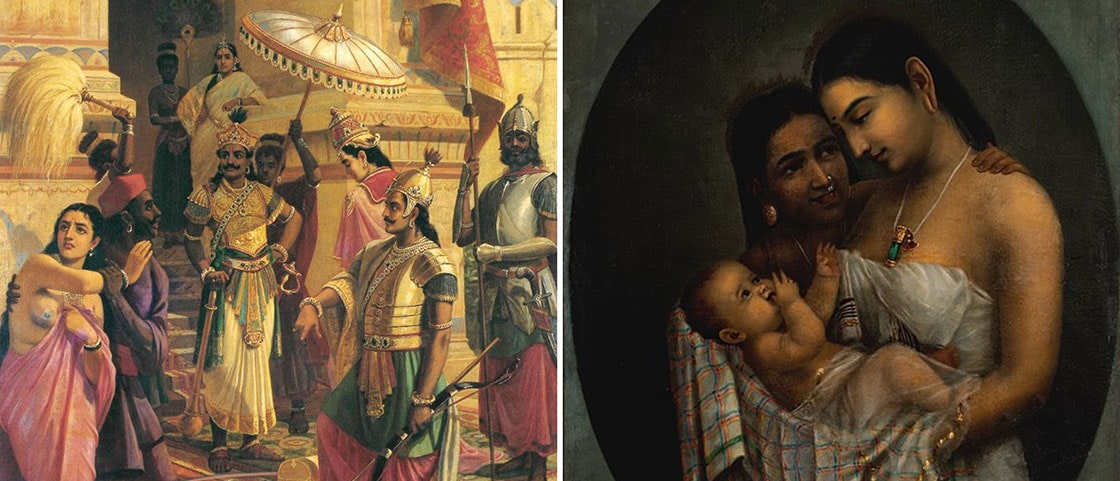
Raja Ravi Varma’s mythological paintings which is a delightful interplay of light and shadows, gave the Hindu Gods and Goddesses their most popular renderings. His painting of Lakshmi, the Goddess of Wealth, is considered as one of best from this series and adorn most Hindu homes and offices. Raja Ravi Varma went on to start a printing press which resulted in his art being mass produced. This made his art affordable for ordinary people and allowed Gods and Goddesses to be worshipped at home. Raja Ravi Varma’s efforts to take his art of Indian divinity beyond the wealthy patrons was nothing short of momentous given that many Indians were not allowed into temples because of caste restrictions. It gradually shaped India’s calendar art and deeply influenced the Indian film industry.
Write to your relationship manager to know more about our Raja Ravi Varma Art Tour in Kerala
Sustainability and Us
Partners of Change: Kaner Retreat
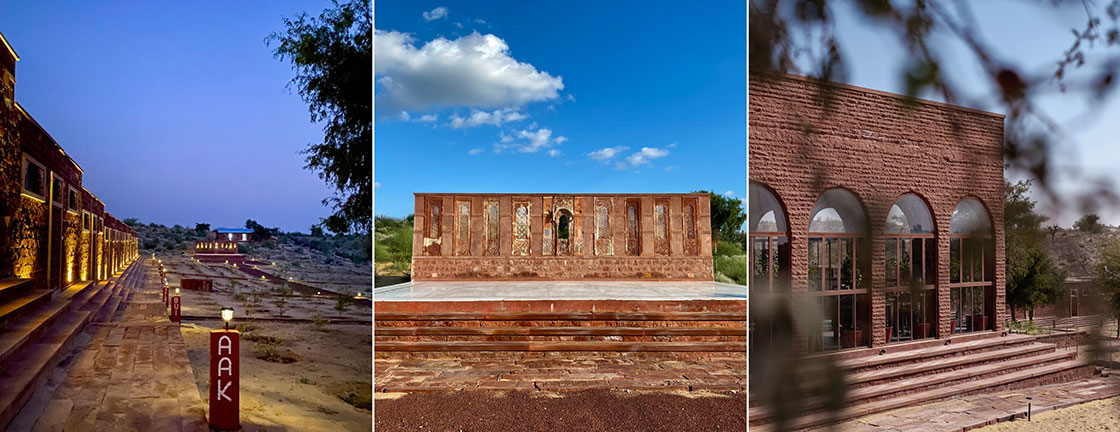
Kaner Retreat is an ode to the Thar Desert and the life that it sustains. The brainchild of Sapna Bhatia, it is the first desert botanical resort nestled in a tranquil hamlet of Dera village. Sitting beside a sacred grove, this 7-acre property is all about sustainable living where the enormous spaces are inspired by the architecture of the desert. Each villa is designed after a native flower and features a private courtyard for guests to unwind. A Mediterranean lunch at the Olive farm, a nature walk led by Sapna, a jeep safari across the desert wilderness, and other exclusive, and regional experiences are available to guests. Food at Kaner is a fusion of international and Rajasthani cuisine; the intimate settings and breathtaking views add charm to the dining experiences.
The idea of creating just 10 living spaces on a 7-acre land was guided by the conscious decision of avoiding any burden on the local resources and environment; while ensuring the guests could have an exclusive, intimate and local experience of the Thar. The insides were designed by using the simple concepts of Reuse, Reclaim and go local.
The décor and furnishings in the resort are representative of the region. The beds in the villas are made using reclaimed wood and the furniture in the glasshouse has been polished and refurbished. To add a touch of heritage antique doors, jaalis, and antiques gathered from old havelis have been put to use across the property. Even the tiles around the property have all been sourced from within the state which include grey stone of Kota in the courtyard, Yellow Sandstone of Jaisalmer, Marble from Makrana, Granite from Jalore, Red Sandstone from Balesar, and the famous Chiitar stone from Jodhpur.
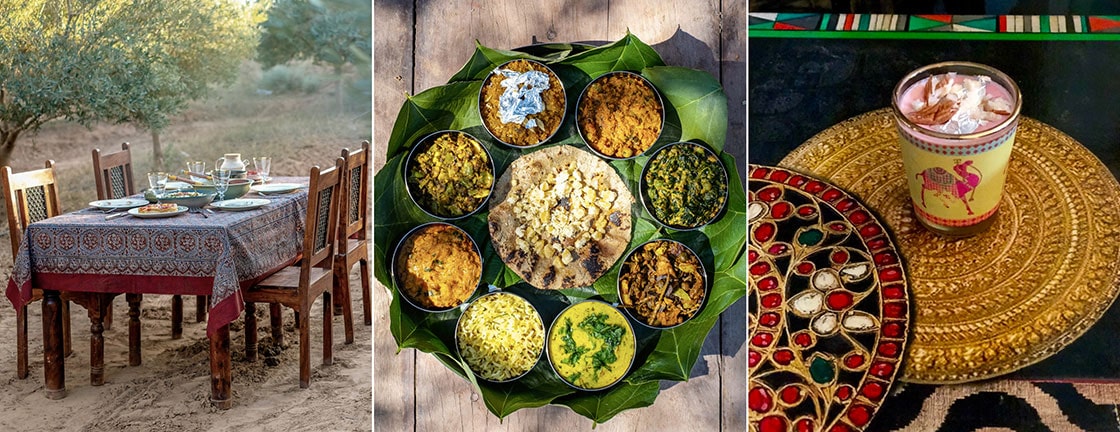
Involving the community has already been central to creating the loving space at Kaner. To add a little bit of the community culture the traditional ‘Pattu’ textiles have been used in the villas. These are woven as narrow strips or “Patti” and are worn by people of all communities. Master weavers from the nearby village of Phalodi were employed to create these customised pieces of textile.
To give a truly intimate experience of the Thar, the Rajasthani and modern fare are prepared using a mix of seasonal and foraged ingredients. Kaner has tied up with local farms for sourcing fresh produce and cold pressed oils. To curb carbon footprints, the team at Kaner has adopted a no-plastic policy. They provide reusable bottles and encourage the use of bamboo brushes, and bamboo combs instead of plastic ones.
While sustainability at Kaner is still evolving, it remains a constant in thought in its daily functions.
Guest Column
More to Goa
By Divija Singh Badnore
For many Goa has always been all about shacks and parties. That for me is the flip side. In fact, my favourite time to be there is the monsoon season. There is something about Goa in the rains. All one needs is a thrilling page-turner, a cup of joe, and you can while away hours to an end. It is just green, serene, and pristine.
My last trip to Goa was in November last year. Work took me there for a week and all I did was discover new places to eat, and tried new beers to drink- my pick still being the original Kings!
So this is my Goa list –
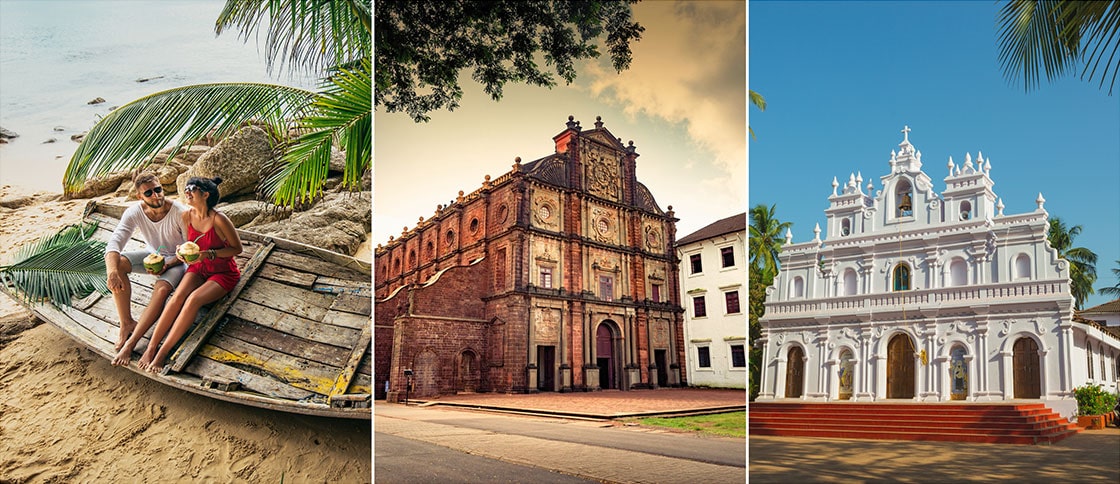
Lazy goose– This has become some sort of a ritual. My first meal is always at Lazy Goose. Maybe because I always stay in Candolim. I always manage to get seated in the corner by the riverside; it’s the most picturesque spot. The food! Really good Goan! They do not have a large menu, but everything on it is delectable. I got the prawns recheado. I can’t resist the recheado masala and order it everywhere I go. And the Goan beef chilly fry served with some poi and chilled beer! What else can one want for their first meal in Goa!
Bhatti village – A small family-run eatery. Feels like eating at a Goan home. I don’t think one can get better and more authentic Goan food elsewhere. The owner is always around, and always helpful with recommendations. The must-try is the pork vindaloo with sannas. This is a spicy, sour, sweet- the best-balanced curry. They use homemade vinegar – it’s the special ingredient – served with sannas, fermented with fresh coconut toddy, they are like fluffy coconut and rice clouds! Serradura is the famous Portuguese sawdust pudding made with biscuits, cream, and condensed milk, and here it is literally the best I have had. And one really needs it after the fiery vindaloo! This place is truly a hidden gem!
Antonio – What a discovery this was! Located on a pretty street in Panjim, I think the location and ambience of a quaint, small-seater restaurant attracted me. I loved the concept of small plates. One can order around and try so many things. Highly recommend the chorizo chili fry and the Prawns Balchao – the Balchao masala is a treat for the palate- spicy and tangy! They serve the best lemonade.
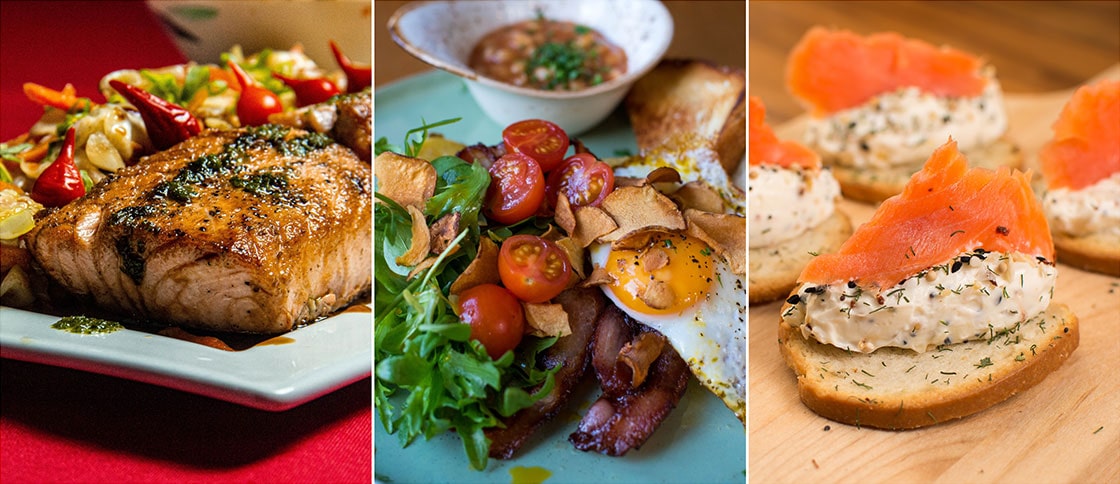
Miguels – I think Miguels is the answer to Goan fine dining. It’s the only place I felt awkward walking in, in my shorts and flip-flops. Thankfully I was not refused entry because the food blew my mind! The mix of local flavours, ingredients, and the presentation is all top-notch! It is art on a plate, like a Portuguese tapas bar. The chorizo chili fry and the tomato salad, and grilled chicken, elevated with all the different components, really hit the spot.
Rita – This eatery was recommended to me by a local. I needed to eat a quick lunch, which it did not turn out to be. So my second weakness in Goa is these kinds of eateries- thatched roof, open patio! What I also loved about this particular place was- no tourists!! Only locals, who really knew their food. I drank a few pints of chilled beer at leisure, and devoured the really large plate of prawns chili fry and a recheado masala king fish fry – which they very considerately served me without the bones.
One thing every restaurant in Goa must serve with everything is Pao I don’t think there is a better Indian bread. Its crusty texture and soft inside go well with anything. Most of my breakfasts in Goa comprise just hot Pao and butter!
Bomras – I had eaten at Bomras years back when it was near the Taj. I loved the food even then. Now I love it even more. Also, I love the new ambiance of the place. Burmese and Thai – my favourite cuisines (after Indian of course!) The spicy tiger prawn curry really hit the spot, and the melt-in-the-mouth tamarind pork was slow-cooked to perfection.
Now I am conflicted here. Everyone recommended the gelato shop opposite Bomras. There was a mad rush, so I had to stand in line to try. Most of the ice cream flavours had finished. Anyway, we managed to try the cherry chocolate and the roasted hazelnut. It tasted like plastic. An overhyped place and quite a disappointment.
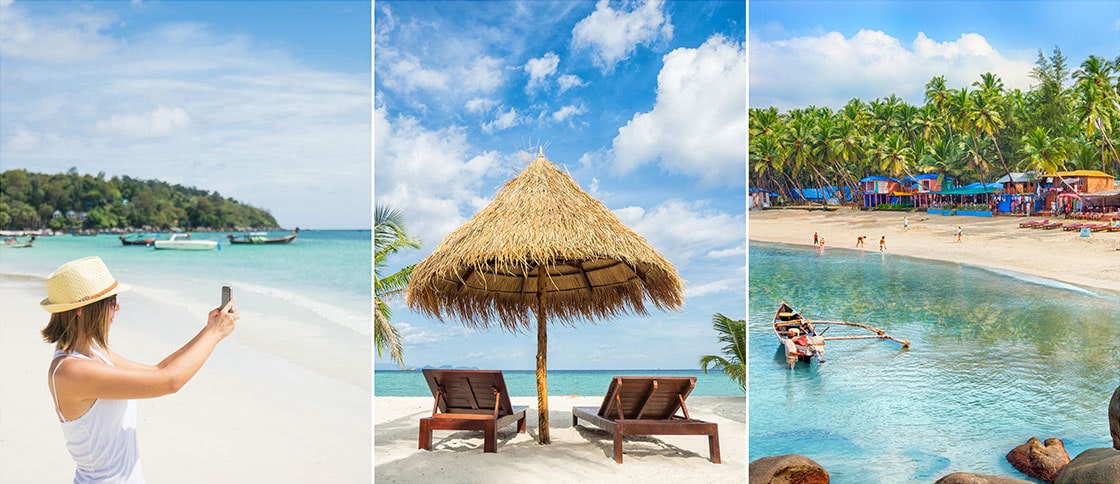
Vinayak – For me, crab is synonymous with Vinayak! I love the place, people, pricing, everything. I mean Old Monk Rum is for 45 bucks, what is not to love? Thankfully we were a large bunch, so we got to order a lot of food. But the crab stood out in the recheado masala (now you can spot a pattern here). The size was perfect. I don’t like them very large, because then you are stuck with it and can’t get anything else. The Chonak Rawa fry was also delicious. Chonak fish is quite a find! I like these uncrowded places where you can eat, drink, take a break and then eat and drink some more.
Mahe – Once you are done eating at all local places, one feels the need to dress up and go to a great bar. Mahe is that place – pretty and contemporary! The pork ribs, prawn balchao, and beef fry went fantastically well with the drinks, and the cocktails are great.
Darlings Bar – If I ever shift to Goa (which I hope will someday), this is one place I want to make my own. You will find me here every evening, at the corner table by the road – having a pint of beer. Sometimes in life, you enter a place and know it is your own. Maybe it’s the company, or the evening you have had, it reflects the local mood and culture of a place. For me, it is Palladio in Jaipur, the Gymkhana in Delhi, and the Darlings bar in Goa!
I went back to Goa again during the monsoon this year, to make sure I don’t break my ritual of heading there during the rains – and discovered more places.
The highlight of this trip with 5 friends was kayaking! What a fun experience in the Aldona part of Goa. Thankfully yet to be discovered by tourists. We had the entire place to ourselves.
Goa for me is all about the food! I revisited Antonio, and well, Gunpowder (no trip to Goa is complete without a meal there)
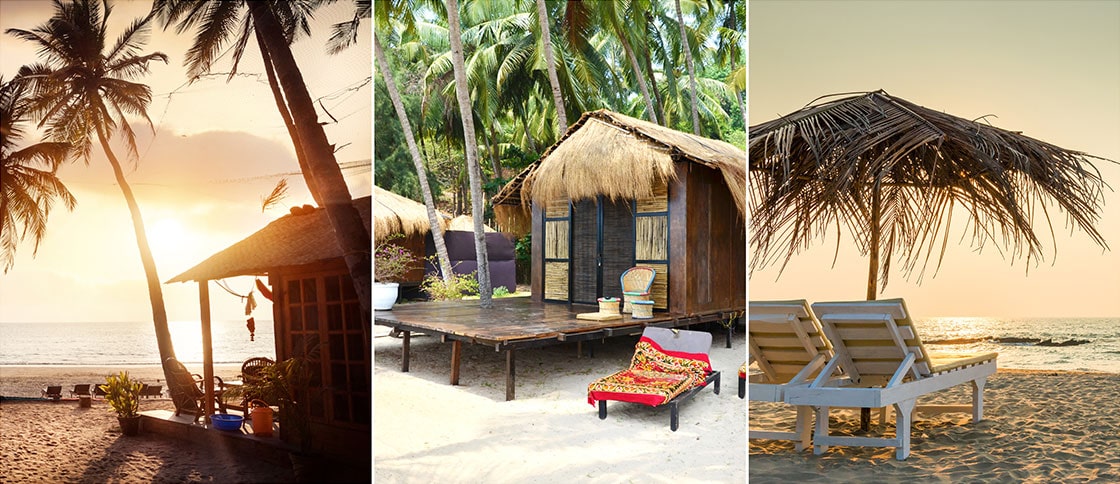
Maai – Inspired from Portuguese time and age, had great cocktails. Food for me was average, but I would certainly go back. The owner is super friendly and recommended some lovely places.
Elephant and Co – Absolutely loved this one. Though we just headed there for some drinks – it had a green and spacious vibe.
Ida – After having two bad experiences here- once they did not give us a table even though the entire place was empty, and second they messed up my booking. I guess the third time’s a charm because I loved the place! The food, cocktails, music, and ambiance – we just had to sit and take it all in.
We checked out some places for breakfast. Loved Babka – the coffee bagels just hit the spot after a long night, and yes we ate desserts for breakfast. Neighbors on the other hand was a huge disappointment. But the coffee and Goan Chorizo Pizza at Baba au Rhum saved the day!
My last day in Goa was the nicest. After three hectic days, we decided to take it easy and headed to Tereza Beach House. A relatively new place by Sly Granny. It had a breathtaking view of the sea. I love being at places where I can hear the waves. The place had good cocktails and the food wasn’t exceptional but the place was just really nice. We sat there for a few hours drinking beer!
In the evening we explored Panjim – an excellent idea!
We started off with Antonio, where they messed up both the cocktails, so we decided to stick to beer and ate a few appetizers, the snapper ceviche was outstanding! Next, we walked next door to Joseph Bar, one of the oldest in Goa, sat curbside, and enjoyed this small, rustic, old-school bar! We then headed to Makutsu, also next door, a tiny new Japanese Yakitori place. We ordered all the kinds of meat on offer and asked them to brush them with soy tare, miso chili, or togarashi butter- I have not had better Yakitori in India. A must must visit!
After stuffing ourselves, we ended our evening at another hidden gem- Miski, a community bar. The only way one can really get a feel of old-time Goan charm is by going to these local bars, eating local food, and interacting with locals. The best part about Goa is that it has so much to offer, even though I went during the most crowded time possible, the Independence Day weekend, I managed to steer away from the madding crowd.
Explore
Old Delhi on a Rickshaw with India City Walks
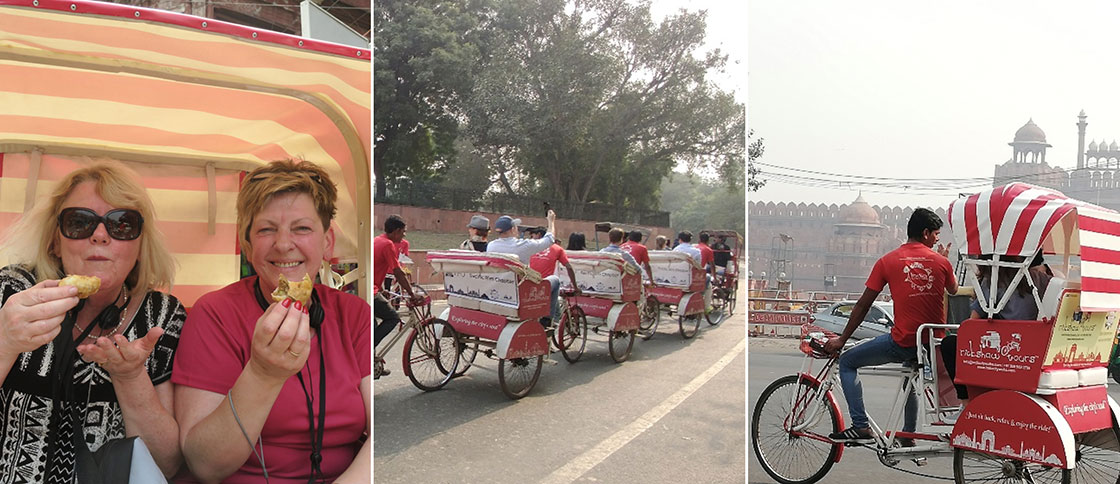
Delhi is not one city. Within it lie several cities that were built, razed, and then rebuilt over a period of several centuries. Shahjahanabad, now commonly known as Old Delhi, is the seventh city of Delhi which was built by the Mughal Emperor Shah Jahan in the mid-17th century. It developed over time as a culturally vibrant city around the periphery of the massive Red Fort. A market was created in front of Red Fort with a water channel flowing through the middle. The beautiful reflection of the moon in the central square in the water channel gave rise to the name Chandni Chowk, or the Moonlight Square. Today’s Shahjahanabad with its narrow lanes, congested streets, small shops and havelis, and crowded bazaars hides several mysteries of the past under the complex layers of history.
A rickshaw tour with India City Walks provides a fantastic opportunity to experience the tangible and intangible heritage of Old Delhi in the most enriching and comfortable way. The rickshaws are custom-made and the design is the brainchild of Sachin & Nidhi Bansal, the founders of India City Walks, a three-time National Tourism Award winner and a Hall of Fame award winner from the Ministry of Tourism, Government of India. The rickshaw tour starts from the parking area of the Red Fort, followed by lanes and by-lanes of the old city including Chandni Chowk, Dariba Kalan [The Silver Market], Kinari Bazaar [Wedding Market], Khari Baoli [Spice Market], and many more. The ride also includes food tasting at several joints.
Just sit back, relax and enjoy the ride!
Festivals to look out for
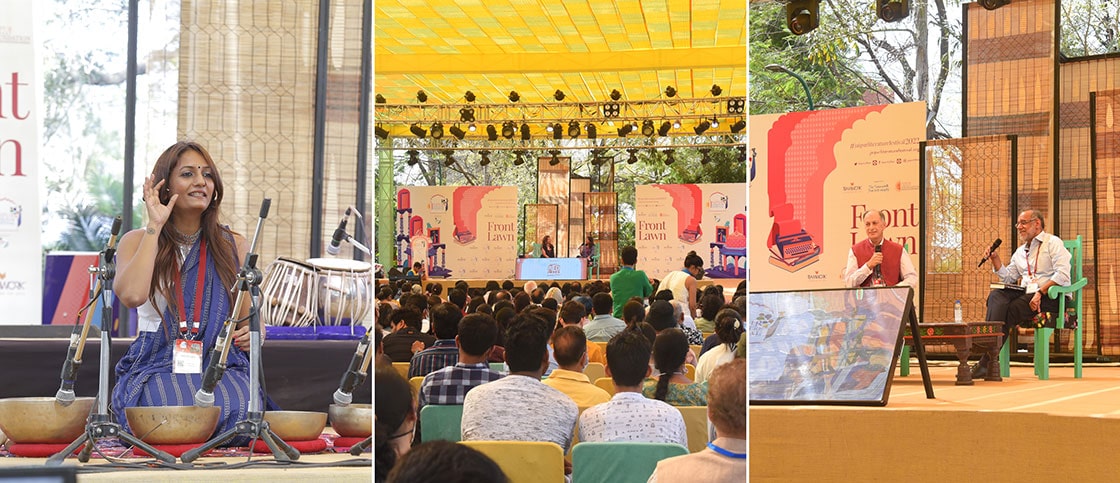
Participate in the ‘greatest literary show on Earth’ – the 16th edition of Jaipur Literature Festival, Jaipur
In the month of January, when the renowned Jaipur Literature Festival arrives, the beautiful Pink City vibrates with an exhilarating energy. A celebration of heart, mind, and intellect, the Jaipur Literature Festival is the world’s largest and ‘greatest literary show’ that sees an unparalleled gathering of authors, artists, poets, and filmmakers from all over the globe. That’s not all – it is a world where books, thoughtful debates and dialogues, music, art and craft, history and heritage, cocktails, and food are abundant. Teamwork Arts, the creator of the Jaipur Literature Festival, is returning with the 16th edition of this five-day long literary fiesta which will be hosted at Hotel Clarks Amer from January 19 to January 23, 2023.
Become a ‘Friend of the Festival’ for a unique experience and avail exclusive privileges. Through this, one can gain access to curated experiences, exclusive access to the Friends of the Festival lounge, priority seating for special sessions, heritage events, sun downer cocktail evenings, and many more.
For more details, please write to us.
Picture Gallery
Water Water Everywhere
Water is revered, celebrated, and has been a source of creative inspiration in India. We are not only blessed with a 4,670-mile coastline that touches Bay of Bengal in the east, the Arabian Sea in the west, and the Indian Ocean to the south, but also a vast network of rivers. Thousands of mini streams, bejeweled with waterfalls, flow through myriad terrains to join these rivers that in turn merge with the sea.
RESOURCES
SITE LINKS
CONTACT US
+ 91 (124) 4563000
Tower B, Delta Square, M.G. Road, Sector 25, Gurgaon - 122001, Haryana, National Capital Region of Delhi, India


